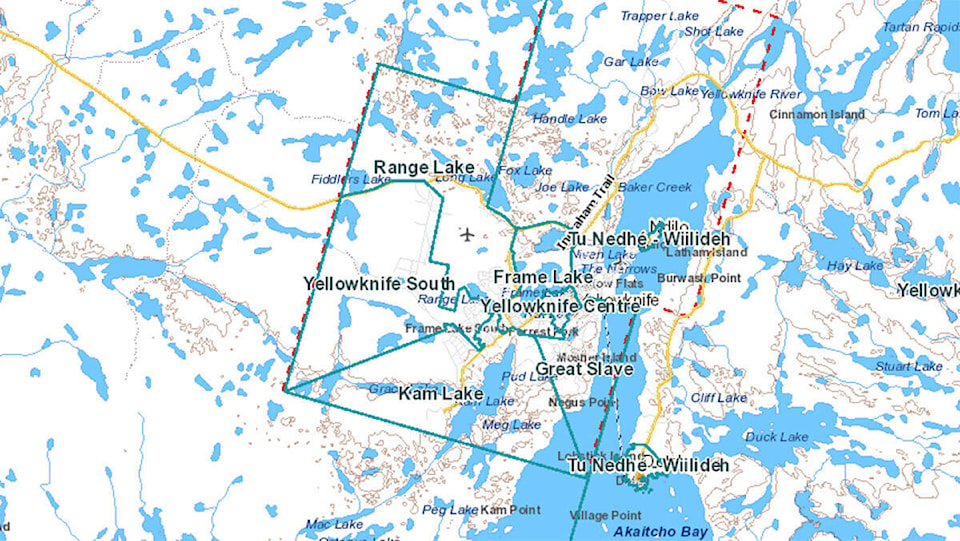Proposed changes to the NWT’s electoral boundaries were coldly received during the first two public feedback hearings.
The NWT’s Electoral Boundaries Commission is currently soliciting feedback as part of its review of the territory’s existing electoral boundaries, with hearings being held this week to allow for public comment.
In its interim report in December, the commission proposed two modified electoral maps: One would roughly preserve the current status quo, with some boundaries shifted in the major population centres of Yellowknife, Hay River and Inuvik; The other would remove one MLA in each of these communities.
At the time, the commission’s secretary, Danielle Mager, said the proposals were not final, but were only meant to stimulate discussion.
The NWT currently has 19 ridings, including seven in Yellowknife, two in Hay River and two in Inuvik.
No members of the public were present during the first hearing on the evening of Feb. 15. However, two NWT residents tuned in to the second hearing on the afternoon of Feb. 16.
Grant Hood, Inuvik’s senior administrative officer, joined the meeting by videoconference to oppose the recommendation to remove one of the community’s two ridings.
He cautioned the commission to “not get caught up in statistics” by deciding on electoral boundaries solely based on population numbers.
He pointed to Inuvik’s diverse population, having significant numbers of Gwichʼin, Inuvialuit, Métis and other residents, as a reason why the community needed more than one representative.
“Reducing Inuvik to one electoral district can only reduce the voice of this very diverse community,” he said.
Having two MLAs in the assembly, Hood said, allows for Inuvik to have representatives on both sides of the assembly. Currently, one of the community’s two MLAs, Inuvik Boot Lake MLA Diane Archie, serves in cabinet as Minister of Infrastructure and Minister Responsible for the Northwest Territories Power Corporation.
For these reasons, Hood said the community endorsed the option that would keep the same number of districts.
Todd Slack, a resident of the Yellowknife North riding, joined over video chat to voice his opposition to the two proposals.
“I expected more on a personal level,” he said.
He was especially critical of the suggestion to eliminate districts in each of the three major population centres, saying it would create two classes of voter with unequal representation. “I can appreciate wanting to screw over the capital city; That is a time-honoured tradition in every jurisdiction in this country,” he said. “But you can’t do it like this.”
In his own riding, Slack is one of about 3,700 constituents, more than one and a half times the territorial average. The Electoral Boundaries Commission Act recommends that the population of each riding should deviate from the mean by at most 25 per cent, although in practice, more than half of the territory’s ridings deviate from this norm.
Slack said it would be more fair to add another MLA in Yellowknife, even though doing so would be unpopular.
The commission will hold another public hearing on Thursday, Feb 17. Interested residents can email info@nwtelectoralboundaries.ca for details on that meeting. The deadline for public comment has also been extended to 5 p.m. on February 28.
